Central America
Balboa, Panama
Balboa is located at the end of the Panama Canal. Long the administrative center of the Canal Zone, it was U.S. territory until the last day of the last century, when it was returned to Panama on December 31, 1999. The 48-mile route begins here and ends in the Caribbean. The French initially began work on the canal in 1881 but stopped due to widespread outbreaks of malaria. The United States resumed construction in 1904 and finished it in 1914. It took thousands of workers dynamite, and pickaxes to build this mammoth marvel. The canal saves sailors from the 8,000-mile journey around the tip of South American.
Belize City, Belize
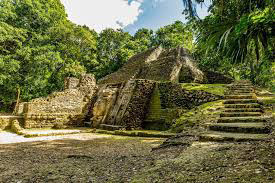 Belize is only about 9,000 square miles but don’t let the small size fool you. You’ll find many adventures in Belize. It’s a divers and snorkelers paradise, with the longest barrier reef in the Western Hemisphere just off shore. On Ambergris Caye a 25-mile-long island off the coast of northern Belize caters to the snorkeling and diving. The island was originally inhabited by the Mayans to serve as a far-extending trade route, spanning from present-day Mexico to as far south as Honduras. Today, Ambergris Caye welcomes thousands of visitors seeking easy access to the barrier reef that surrounds the island. Snorkelers and divers alike will want to explore Hol Chan Marine Reserve. Covering 3 square miles, this densely populated aquatic zone is a sanctuary for stingrays, eels and sharks, among other creatures.
Belize is only about 9,000 square miles but don’t let the small size fool you. You’ll find many adventures in Belize. It’s a divers and snorkelers paradise, with the longest barrier reef in the Western Hemisphere just off shore. On Ambergris Caye a 25-mile-long island off the coast of northern Belize caters to the snorkeling and diving. The island was originally inhabited by the Mayans to serve as a far-extending trade route, spanning from present-day Mexico to as far south as Honduras. Today, Ambergris Caye welcomes thousands of visitors seeking easy access to the barrier reef that surrounds the island. Snorkelers and divers alike will want to explore Hol Chan Marine Reserve. Covering 3 square miles, this densely populated aquatic zone is a sanctuary for stingrays, eels and sharks, among other creatures.
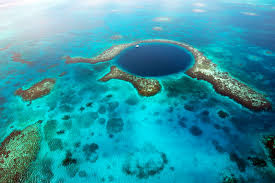 Another amazing site, The Great Blue Hole, where you’ll find ancient stalactites and coral fringe. Declared a UNESCO World Heritage Site in 1996, along with six other areas surrounding Belize’s barrier reef, the Great Blue Hole remains one of the world’s best dive sites. Created approximately 10,000 years ago after a cave roof crumbled in, this blue channel contains underwater tunnels, caverns and rock formations.
Another amazing site, The Great Blue Hole, where you’ll find ancient stalactites and coral fringe. Declared a UNESCO World Heritage Site in 1996, along with six other areas surrounding Belize’s barrier reef, the Great Blue Hole remains one of the world’s best dive sites. Created approximately 10,000 years ago after a cave roof crumbled in, this blue channel contains underwater tunnels, caverns and rock formations.
Wildlife-seekers will marvel at Belize’s magnificent jaguars, pumas, howler monkeys, parakeets and keel-billed toucans at the Belize Zoo.
There are also impressive Mayan archeological sites. At Lamanai a 960-acre Mayan site, you’ll find crocodile art and artifacts depicting reptiles, and iguanas.
At Altun Ha, you’ll find tombs, pyramids and temples. Altun Ha —meaning “Rockstone Pond” in Yucatec Maya — features a man-made lagoon, which remains intact. You can also explore the Temple of the Green Tomb, where elite priest-kings were buried with luxurious items, such as jade, pottery and pearls.
Cayos Cochinos, Honduras
The Cayos Cochinos belong to the world’s second largest barrier reef, it is an archipelago of 13 coral cays and 2 volcanic islands. The Cayos Cochinos Natural Marine Monument is considered one of the places that you must visit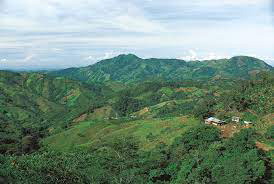 before you die. The Marine reserve has unspoiled reefs, with a kaleidoscope of coral make it a divers paradise! You can swim in the turquoise waters, relax on the white sand beaches, snorkel, hike and learn to dive here.
before you die. The Marine reserve has unspoiled reefs, with a kaleidoscope of coral make it a divers paradise! You can swim in the turquoise waters, relax on the white sand beaches, snorkel, hike and learn to dive here.
The islands of Cayos Cochinos have been declared a biological marine reserve, and access to Cayos Pequeño is restricted to scientists and volunteers associated with the caretakers, the Honduras Coral Reef Fund.
Cayos Grande is available to tourists, and can be accessed by boat. There is a fee charged to visit Cayos Cochinos, and park rangers patrol regularly to ensure compliance with all regulations. Activities in Cayos Cochinos include hiking to the lighthouse on Cayos Grande for a panoramic view, scuba diving, snorkeling, swimming, or lounging on the beach. Travelers interested in local culture will enjoy visiting one of the smaller islands’ Garifuna fishing villages.
Colon, Panama
Colon is the Caribbean entrance to the Panama Canal. Colon is also home to the largest free-trade zone in the Americas, and the city hosts dozens of banks and wonderful places to shop. For tourists, Colon is usually not much more than a stopover for the attractions outside of the city.
Visitors can watch ships pass through the canal at The Canal Expansion Observation Center, a park with viewing platforms over the canal’s Atlantic locks and Gatún Lake. The Gatun Locks raise southbound ships almost 100 feet up to the elevation of Gatun Lake before they travel down to the southern locks and are lowered again.
Nearby you’ll find several natural attractions, including Achiote Road, which is one of the country´s best bird-watching locations, and Isla Grande, a pristine Caribbean island. The nearby village of Portobello has a historic treasure that once gold that the Spanish had plundered from the local natives. The village is also home to five Spanish forts that were built to protect it from pirates. Including the Fuerte San Lorenzo,a well-preserved fort, built by the Spanish in 1595.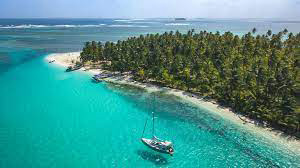
Contadora Island, Panama
Contadora Island is a nature lover’s paradise and is the 11th largest island in the archipelago of the Pearl Islands. You can enjoy many forms of water sports here. From fishing to scuba diving in the beautiful blue waters this island has it all! There is a nine-hole golf course too. For the daring there is a nude beach at Playa Sueca. Families enjoy swimming at Playa Larga, the best place to spot sharks and turtles.
Cristobal, Panama
Cristobal is located on an isthmus made of artificial fill that connects Manzanillo Island with the mainland. It was created a port of entry for supplies while the Panama Canal was being built. Cristobal is one of the country’s most important ports. Next door you’ll find the international trade city of Colon, most notable for the Colon Free Zone, an import/export hub and a good place to shop.
Curu, Costa Rica
The Curú National Wildlife Refuge and Hacienda is located on the southern Nicoya Peninsula of northwestern Costa Rica. Visitors will find abundant wildlife and one of the most beautiful beaches and protected bays on the Nicoya Peninsula. While there you can see White-faced monkeys, Howler monkeys, Spider Monkeys, Scarlet Macaws, White-tailed Deer, Collared Peccary, Coati, Raccoons, Coyotes, Iguanas, and hundreds of species of tropical and migratory birds.
Peninsula. While there you can see White-faced monkeys, Howler monkeys, Spider Monkeys, Scarlet Macaws, White-tailed Deer, Collared Peccary, Coati, Raccoons, Coyotes, Iguanas, and hundreds of species of tropical and migratory birds.
Fuerte Amador, Panama
The port of Fuerte Amador is located at the Pacific entrance to the Panama Canal. Located on a manmade peninsula, the port is next door to Panama City. There are several shops, restaurants, and other specialty stores centered around a large marina that serves as a tender dock. Here you can find duty-free bargains, including the famous molas, hand woven by the Kuna Indians of San Blas.
Goff’s Caye, Belize
Goff’s Caye is a small island off of Belize City. You can only get there by taking a shore excursion. It’s a great place to relax on a private sandy beach, swim in the sparkling blue waters and snorkel over amazing coral reefs.
Golfito, Costa Rica
Golfito is located on the Pacific side of Costa Rica. Its described by many as the last frontier because of its unexplored rugged wilderness and lush tropical forests. A major southern port until the mid-1980’s, Golfito was the center of this banana growing region. The sparkling beaches here are a wonderful place to kick back and relax or for those looking for adventure, catch a wave and surf. Sportfishing fans will love this port. Its known as a great place to catch Pacific sailfish.
Livingston, Guatemala
Livingston, a Caribbean port town, is located at the end of the Rio Dulce river. A fascinating town, founded by the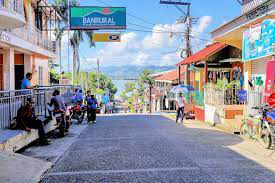 Garifuna, descendants of shipwrecked slaves. Take a tour of this historic area, and make sure to check out the amazing local handicrafts. Cruise up the Rio Dulce and explore the amazing canyons and cliffs inhabited by a remarkable array of bird life, including herons, egrets and pelicans. You can even swim in the crystal blue pools of the Seven Altars at the bottom of beautiful waterfalls. Looking for a sandy beach? A speedboat ride to playa Blanca will take you to one of the few sandy beaches in eastern Guatemala.
Garifuna, descendants of shipwrecked slaves. Take a tour of this historic area, and make sure to check out the amazing local handicrafts. Cruise up the Rio Dulce and explore the amazing canyons and cliffs inhabited by a remarkable array of bird life, including herons, egrets and pelicans. You can even swim in the crystal blue pools of the Seven Altars at the bottom of beautiful waterfalls. Looking for a sandy beach? A speedboat ride to playa Blanca will take you to one of the few sandy beaches in eastern Guatemala.
Man-O-War Cay, Belize
Man-O-War Cay is located 70 miles south of Belize City and close to South Water Cay. There are three different types of mangrove vegetation growing here which makes it a perfect sanctuary for brown boobies, frigate birds also known as Man-O-War birds and pelicans. As you approach the cay, you’ll see birds soaring in the sky in every direction.
Omoa, Honduras
Omoa is one of the oldest towns in Honduras. With its rich colonial history there are many things to do and see here. While there visit the San Fernando Fort, built by the Spanish in the late 1700’s to protect the town from pirates.  During the colonial era, Omoa was the most important port on the Atlantic coast of Central America. The goods collected from Honduras were sent by ship to Spain from this location. For nature lovers, you can see birds, alligators, iguanas, manatees and howler monkeys in the Jaloa Wetlands. Travel along the Mogote River and see many species of birds as you wind around huge rocks that form large pools, ideal for cooling off. “La Piedra Cocha” in Omoa is another great place to explore caves! You will also find some of the best sandy beaches and blue waters. While in town try a few local dishes including conch soup, fried fish, cassava and coconut bread.
During the colonial era, Omoa was the most important port on the Atlantic coast of Central America. The goods collected from Honduras were sent by ship to Spain from this location. For nature lovers, you can see birds, alligators, iguanas, manatees and howler monkeys in the Jaloa Wetlands. Travel along the Mogote River and see many species of birds as you wind around huge rocks that form large pools, ideal for cooling off. “La Piedra Cocha” in Omoa is another great place to explore caves! You will also find some of the best sandy beaches and blue waters. While in town try a few local dishes including conch soup, fried fish, cassava and coconut bread.
Panama City, Panama
Panama City was founded in 1519 by the Spanish conquistadors. For 150 years it flourished as Spain exported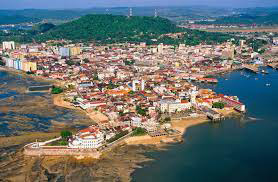 Peruvian gold and silver to Europe via Panamá. In 1671, Captain Henry Morgan sacked the city and it was relocated to the present-day Casco Viejo. The city is a historical mix of colonial and modern architecture. It’s a city of ethnic diversity, which is reflexed in variety of culinary styles and Panamanian dishes, which are a unique blend of Spanish, French, African, and Native American cuisine. While there don’t miss the archaeological site of Panama Viejo. Abandoned in the mid-17th century the architecture is an unusual mix of Spanish, French and early American styles. You can also see pre-Columbian artifacts from the Cuevan aborigines there. Hike through acres and acres national parks and the rainforest at Parque Natural Metropolitano, located just minutes from downtown. Then visit the Miraflores locks to watch huge ships travel through the Panama Canal. Panama also offers great opportunities for snorkeling and deep-sea fishing.
Peruvian gold and silver to Europe via Panamá. In 1671, Captain Henry Morgan sacked the city and it was relocated to the present-day Casco Viejo. The city is a historical mix of colonial and modern architecture. It’s a city of ethnic diversity, which is reflexed in variety of culinary styles and Panamanian dishes, which are a unique blend of Spanish, French, African, and Native American cuisine. While there don’t miss the archaeological site of Panama Viejo. Abandoned in the mid-17th century the architecture is an unusual mix of Spanish, French and early American styles. You can also see pre-Columbian artifacts from the Cuevan aborigines there. Hike through acres and acres national parks and the rainforest at Parque Natural Metropolitano, located just minutes from downtown. Then visit the Miraflores locks to watch huge ships travel through the Panama Canal. Panama also offers great opportunities for snorkeling and deep-sea fishing.
Playa Flamingo, Costa Rica
Located off the Pacific on the Gold Coast, Playa Flamingo is a Costa Rican jewel! From its tropical beaches and crystal blue waters to its lush rain forests and wildlife there is something for everyone here. Try your hand at surfing 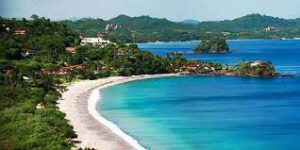 or get some scuba gear and explore the water beneath the ocean surface. The waters off Costa Rica’s shores are teeming with marine life. There are Go starfish, coral reefs, eels, reef sharks and an amazing collection of wildly colored tropical fish just waiting for you to explore! There is also an 18-hole course with a par 72 over 7,500 yards of greens and roughs. This world-class championship course is one of the country’s best. Playa Flamingo is near the Palo Verde Natural reserve and Santa Rosa National Park, the country’s first national park and its largest. These lush tropical forests are home to more than 115 mammal species, 100 species of amphibians and reptiles and 250 bird species. The rains bring lush greenery, but the dry season reveals trails that will take you from beach to waterfalls, dry forest and more.
or get some scuba gear and explore the water beneath the ocean surface. The waters off Costa Rica’s shores are teeming with marine life. There are Go starfish, coral reefs, eels, reef sharks and an amazing collection of wildly colored tropical fish just waiting for you to explore! There is also an 18-hole course with a par 72 over 7,500 yards of greens and roughs. This world-class championship course is one of the country’s best. Playa Flamingo is near the Palo Verde Natural reserve and Santa Rosa National Park, the country’s first national park and its largest. These lush tropical forests are home to more than 115 mammal species, 100 species of amphibians and reptiles and 250 bird species. The rains bring lush greenery, but the dry season reveals trails that will take you from beach to waterfalls, dry forest and more.
Puerto Caldera, Costa Rica
Puerto Caldera is located on Costa Rica’s western coast. It is often a starting point for cruises and shipping vessels. The town is near many of Costa Rica’s top tourist attractions. Located right off the Gulf of Nicoya and close to Los Suenos and Tortuga Island. Puerto Caldera is the perfect destination for those who love to go off-the-beaten-path. Carara National Park is a biological reserve located between the dry forests to the north and the lush tropical rainforests to the south. This 13,000-acre park features both dry and wet rainforests. The Tarcoles River cuts through the park, and is home to thousands of native mammals and bird species. Poas Volcano National Park is another popular destination.
Suenos and Tortuga Island. Puerto Caldera is the perfect destination for those who love to go off-the-beaten-path. Carara National Park is a biological reserve located between the dry forests to the north and the lush tropical rainforests to the south. This 13,000-acre park features both dry and wet rainforests. The Tarcoles River cuts through the park, and is home to thousands of native mammals and bird species. Poas Volcano National Park is another popular destination.
Poas is an active volcano with frequent small geyser and lava eruptions. The last major eruptions at Poas Volcano were from 1952-54. The visitors center has interactive educational presentations and activities.
Puerto Limon, Costa Rica
Puerto Limon is a port town on Costa Rica’s Caribbean coast. It serves as a great jumping off point to many nearby attractions. There are a few sites worth seeing in town. The Parque Vargas is a waterfront park landscaped with palms, tropical foliage and flowering plants, from there you can see scenic coastal rock formations. At the Museo Etnohistoric de Limon you can see cultural and historical exhibits relating to the local area. If you want to bargain for souvenirs and local crafts, visit the central market or head to the pier where a handful of stores await cruise ship passengers.
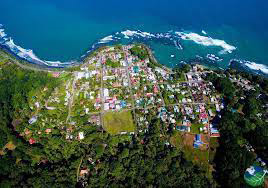 The Veragua Rainforest Reserve is 3,400-acre park in the hills surrounding Puerto Limon. If you are feeling adventurous, try the Canopy Tour. There are 12 zip lines that take you through the rain forest canopy. You can also take an aerial tram ride and visit the butterfly garden hummingbird garden or frog exhibit.
The Veragua Rainforest Reserve is 3,400-acre park in the hills surrounding Puerto Limon. If you are feeling adventurous, try the Canopy Tour. There are 12 zip lines that take you through the rain forest canopy. You can also take an aerial tram ride and visit the butterfly garden hummingbird garden or frog exhibit.
Another feasible day trip is a tour of the Tortuguero Canals by boat. Travel three miles from Limon to the port of Moin, where you can hire a boat and guide to explore this national park, a natural maze of slow-moving waterways lined with rain forest. Look out for sloths, toucans, monkeys and crocodiles. There are many other adventures you can take from this port including wildlife-themed tours, a jungle canoe ride, visits to cocoa, pineapple or coffee plantations, a ride on the historic banana route railway, or white water river rafting.
Puerto Quepos, Costa Rica
Located on Costa Rica’s central Pacific coast, Puerto Quepos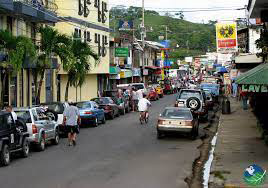
is a tropical inlet surrounded by the rainforest. This small harbor town is known for its big game sport fishing as well as being the gateway to Manuel Antonio National Park. With trails that take you by mangroves, waterfalls, lagoons and secluded jungle pools you’ll feel like you’ve been transported to paradise! Known for ecotourism you can find canopy tours, horseback riding, kayaking, swimming, white water rafting and scuba diving.
Puerto Quetzal, Guatemala
Puerto Quetzal is Guatemala’s largest Pacific Ocean port. This is a jumping off point for exploring Guatemala. From there you can take shore excursions to the colonial town of Antigua a UNESCO World Heritage Site, visit coffee plantations, inactive volcanoes and Mayan ruins. You can also take a trip to Lake Atitlan. This is a great place for bird watching and exploring small Mayan villages. Or stay in town and shop for local souvenirs and textiles.
Roatan, Honduras
Roatan is located off the northern coast of Honduras in the Caribbean. This island is a divers paradise! The island is surrounded by the world’s second largest coral reef. You can swim with the dolphins at Anthony’s Key Resort, snorkel, kayak, dive, fish, or simply relax on the beach. Explore the island on an ATV or on horseback. Visit the botanical gardens, butterfly gardens, and the iguana farm. You can also take a canopy tour and zip line through the trees. If you’re looking for more adventure, take a submarine ride, or a glass-bottom boat tour. The island also has a golf course.
island is surrounded by the world’s second largest coral reef. You can swim with the dolphins at Anthony’s Key Resort, snorkel, kayak, dive, fish, or simply relax on the beach. Explore the island on an ATV or on horseback. Visit the botanical gardens, butterfly gardens, and the iguana farm. You can also take a canopy tour and zip line through the trees. If you’re looking for more adventure, take a submarine ride, or a glass-bottom boat tour. The island also has a golf course.
San Juan del Sur, Nicaragua
San Juan Del Sur is a port town on Nicaragua’s southwest coast. It’s known for its sandy beaches and killer surf breaks. With it’s year round warm climate, it’s a great place to relax on the beach. Take a tour of the town, visit the many shops and restaurants, or take a hike up to the Christ of Mercy statue that overlooks the bay. From there you can see Costa Rica. If you’re interested in wildlife, visit La Flor Beach Natural Reserve. This is one of the few places in the world where sea turtles come to lay their eggs. You can also explore the colonial city of Granada, or take a boat tour of the islets on Lake Nicaragua.
Santa Tomas de Castilla, Guatemala
Santa Tomas de Castilla, also known as Matías de Gálvez is a port city in the Izabal Department, Guatemala. It lies at Amatique Bay off the Gulf of Honduras and is administratively a part of Puerto Barrios. This is a great jumping off point for exploring the Mayan ruins of Quirigua with its impressive series of carved stelae and sculpted calendars. Or visit the beautiful Rio Dulce river, Lake Izabal and take a boat ride to Livingston. You can also visit the Spanish colonial fort of San Felipe, built to protect the region from pirate attacks.
Tortuguero, Costa Rica
Tortuguero, Costa Rica is a village on the Northern Caribbean coast of Costa Rica in the Limón Province. It gave its name to the neighboring Tortuguero National Park. The village is situated on a sand bar island, separated from the mainland by Tortuguero River and bordering the Caribbean Sea. Tortuguero is renowned for its navigable canals that run through the rainforest in the national park, and has such earned the nickname of ‘Central America’s Amazon’. The beaches around Tortuguero are key nesting sites for four species of sea turtle, including two critically endangered species. The National Park is also host to an incredible biodiversity of insects, resident and migratory birds, and mammals, including jaguar and four species of monkey.
Trujillo, Honduras
Trujillo is a city and a municipality on the northern Caribbean coast of the Honduran department of Colón, of which the city is the capital. The municipality has a population of about 30,000 (2003). The city is located on a bluff overlooking the Bay of Trujillo. Behind the city rise two prominent mountains, Mount Calentura and Mount Capiro. Trujillo has a tropical rainforest climate, under the Köppen climate classification, with a short dry season from February to April, and a wet season for the remaining eight months of the year. Trujillo is surrounded by National Parks and Wildlife refuges including Guaimoreto Lagoon Nature Reserve and Capiro Calentura National Park. Trujillo has been recognized for its tropical forests, beaches, and coral reefs.
Zihuatanejo, Mexico
Zihuatanejo, or Ixtapa-Zihuatanejo, is the fourth-largest city in the Mexican state of Guerrero. It was anciently known by its Aztec name, Cihuatlán, meaning “Place of Women”, the grandmother of Tecún Umán. The city has been developed as a tourist attraction along with the modern tourist resort of Ixtapa, 5 km away. However, Zihuatanejo has kept its traditional town feel. The town is located on a well-protected bay. The architecture is traditional Mexican with cobblestone streets and no tall buildings. Fishing is an important part of the economy, alongside tourism.



